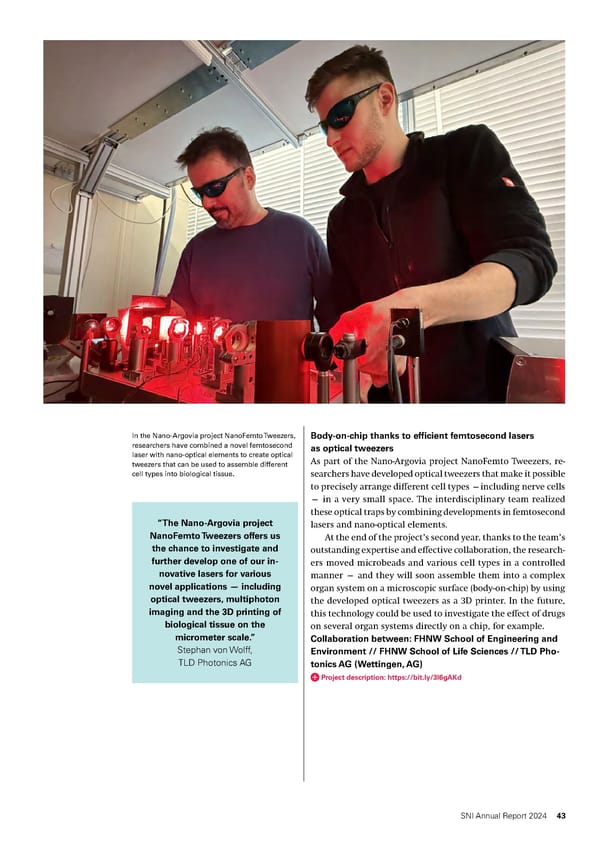In the Nano-Argovia project NanoFemto Tweezers, Body-on-chip thanks to efficient femtosecond lasers researchers have combined a novel femtosecond as optical tweezers laser with nano-optical elements to create optical As part of the Nano-Argovia project NanoFemto Tweezers, re- tweezers that can be used to assemble different cell types into biological tissue. searchers have developed optical tweezers that make it possible to precisely arrange different cell types —including nerve cells — in a very small space. The interdisciplinary team realized these optical traps by combining developments in femtosecond “The Nano-Argovia project lasers and nano-optical elements. NanoFemto Tweezers offers us At the end of the project’s second year, thanks to the team’s the chance to investigate and outstanding expertise and effective collaboration, the research- further develop one of our in- ers moved microbeads and various cell types in a controlled novative lasers for various manner — and they will soon assemble them into a complex novel applications — including organ system on a microscopic surface (body-on-chip) by using optical tweezers, multiphoton the developed optical tweezers as a 3D printer. In the future, imaging and the 3D printing of this technology could be used to investigate the effect of drugs biological tissue on the on several organ systems directly on a chip, for example. micrometer scale.” Collaboration between: FHNW School of Engineering and Stephan von Wolff, Environment // FHNW School of Life Sciences // TLD Pho- TLD Photonics AG tonics AG (Wettingen, AG) Project description: https://bit.ly/3I6gAKd SNI Annual Report 2024 43
 Annual Report 2024 - Swiss Nanoscience Institute Page 42 Page 44
Annual Report 2024 - Swiss Nanoscience Institute Page 42 Page 44